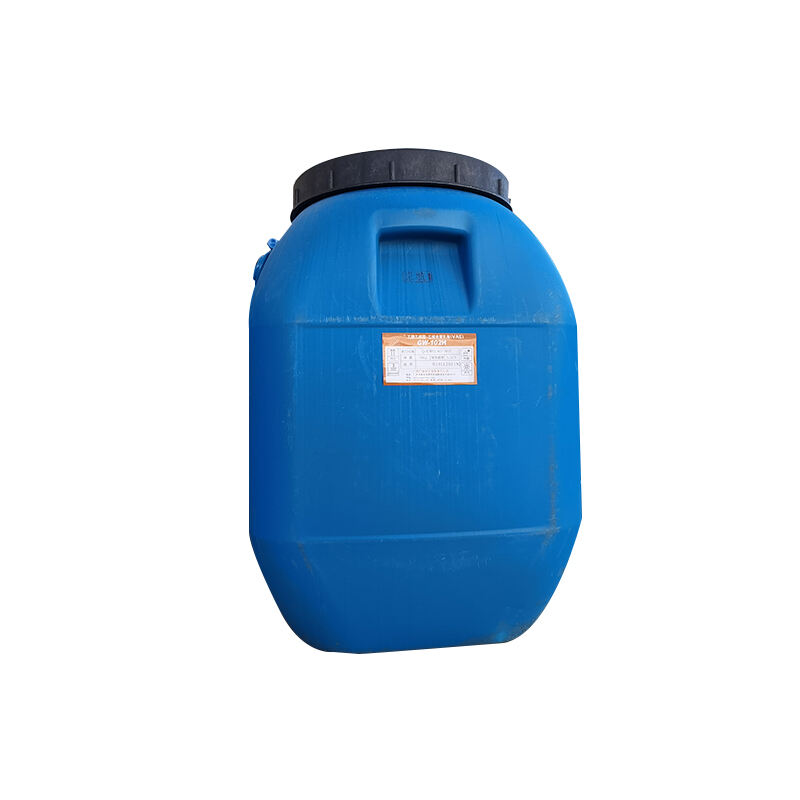Максимизация эффективности с эмульсиями VAE в промышленных процессах
В сегодняшнем конкурентном промышленном ландшафте компании постоянно стремятся повысить эффективность и результативность за счет внедрения инновационных материалов. Значительным игроком в этой области является эмульсии винилацетата-этилена (VAE) , которые широко признаны за свою универсальность и производительность в различных приложениях. В этом блоге мы углубимся в то, что такое эмульсии VAE, их преимущества, их применение в различных отраслях, последние рыночные тенденции и будущие направления, формирующие этот динамичный рынок.
Понимание эмульсий VAE: определение и состав
Что такое эмульсии VAE?
Эмульсии VAE являются сополимерами, полученными в результате сочетания винилацетата и этилена, что обычно достигается с помощью сложного процесса сополимеризации. Это сочетание производит стабильную эмульсию, которая может быть использована в самых различных приложениях, от строительства до текстиля.
Состав винилацетата и этилена
Основные компоненты эмульсий VAE - это винилацетат и этилен. Винилацетат обеспечивает отличные адгезионные свойства, в то время как этилен способствует гибкости и улучшенной термической производительности. Вместе они создают эмульсию, которая балансирует прочность и адаптивность, что делает ее подходящей для различных промышленных нужд.
Свойства, имеющие значение для промышленных приложений
Эмульсии VAE обладают несколькими свойствами, которые особенно полезны для промышленных приложений. Они демонстрируют отличную адгезию, гибкость, низкое содержание летучих органических соединений (ЛОС) и превосходную водостойкость, что является необходимым во многих секторах, таких как строительство, автомобилестроение и упаковка.
Ключевые преимущества использования эмульсий VAE в промышленности
Улучшенная адгезия и гибкость
Одним из самых заметных преимуществ эмульсий VAE являются их превосходные адгезионные свойства, которые значительно улучшают характеристики сцепления в таких приложениях, как клеи и покрытия. Гибкость, которую они предлагают, обеспечивает долговечность при различных эксплуатационных условиях, что является критически важным фактором в условиях высокого стресса, таких как строительство.
Экологическая устойчивость и низкое содержание ЛОС
В свете растущего давления со стороны регулирующих органов и потребительского спроса на экологически чистые продукты, эмульсии VAE выделяются благодаря своему низкому содержанию ЛОС. Эти характеристики не только соответствуют экологическим стандартам, но и ставят их в выгодное положение среди производителей и потребителей, заботящихся об окружающей среде.
Всесторонность в различных применениях
Эмульсии VAE невероятно универсальны, выполняя множество ролей в различных секторах. От строительных материалов, клеев и красок до текстиля и упаковки, их адаптивность позволяет отраслям максимизировать производительность и эффективность материалов.
Промышленные приложения эмульсий VAE
Использование в строительстве: клеи и герметики
В строительном секторе эмульсии VAE широко используются в клеях и герметиках благодаря их отличной адгезии и гибкости. Они улучшают характеристики строительных материалов, повышая водоотталкивающие свойства, долговечность и общую прочность соединения.
Роль в красках и покрытиях
Краски и покрытия, разработанные с использованием эмульсий VAE, известны своей долговечностью, сохранением блеска и устойчивостью к погодным условиям. Поскольку потребители все больше предпочитают краски с низким содержанием летучих органических соединений, эмульсии VAE служат желаемой альтернативой традиционным растворителям, удовлетворяя требования устойчивого развития без ущерба для производительности.
Эмульсии VAE в текстильной промышленности
Текстильная промышленность получает выгоду от гибкости и адгезионных свойств эмульсий VAE. Они используются в покрытиях, отделочных агентах и клеях, обеспечивая текстилю улучшенные свойства, такие как водо- и грязеотталкивающие характеристики, при этом обеспечивая комфорт и легкость ухода.
Тенденции рынка, влияющие на индустрию эмульсий VAE
Прогнозы роста и размер рынка
Рынок эмульсий VAE, как ожидается, значительно вырастет, с оценкой, которая должна достичь $4.04 миллиарда к 2035 году по сравнению с примерно $2.5 миллиарда в 2024 году , что отражает среднегодовой темп роста (CAGR) в 4.47% . Этот рост в первую очередь обусловлен увеличением индустриализации, городским развитием и растущим переходом к устойчивым материалам.
Технологические инновации, способствующие принятию
Инновации в производстве и формулировании эмульсий VAE играют ключевую роль в их растущем принятии. Производители инвестируют в технологии, которые оптимизируют характеристики производительности эмульсий VAE, одновременно решая экологические проблемы, что повышает их привлекательность на конкурентных рынках.
Проблемы и конкурентная среда
С ростом спроса на экологически чистые решения, индустрия эмульсий VAE сталкивается с давлением к постоянным инновациям. Кроме того, колебания цен на сырьевые материалы и конкуренция со стороны альтернативных продуктов требуют от компаний гибкости в их маркетинговых и операционных стратегиях для поддержания лидерских позиций.
Будущие направления: Эволюция рынка эмульсий VAE
Тенденции устойчивого развития и потребительский спрос
Стремление к устойчивому развитию будет только набирать обороты. Производители, сосредоточенные на создании экологически чистых формул, находятся в выгодном положении, поскольку потребительский спрос продолжает смещаться в сторону более зеленых альтернатив.
Регуляторные влияния на использование VAE
Регуляторные рамки будут все больше требовать использования материалов с низким содержанием летучих органических соединений. Соблюдение этих норм не только защитит окружающую среду, но и создаст возможности для роста для производителей VAE, предлагающих соответствующие решения.
Потенциал для инноваций в приложениях
По мере развития отраслей будут развиваться и применения эмульсий VAE. С продолжающимися исследованиями и разработками потенциальные инновации могут привести к новым формулам и применениям, которые еще больше улучшат производительность и устойчивость.
В заключение, Эмульсии VAE представляют собой важный компонент современных промышленных процессов, предлагая беспрецедентные преимущества в различных секторах. Их растущее значение обусловлено их универсальностью, экологической устойчивостью и преимуществами в производительности. Будущее эмульсий VAE светло, с существенными возможностями для инноваций и расширения на все более экологически сознательном рынке.
Понимая и используя эти преимущества, отрасли могут максимизировать эффективность, обеспечивая конкурентное преимущество в быстро меняющемся глобальном ландшафте.

